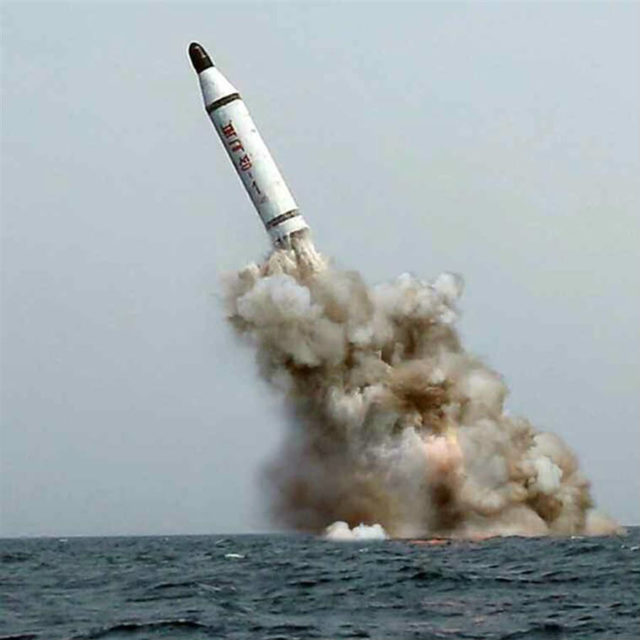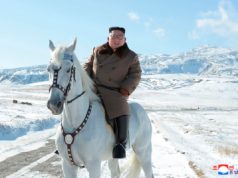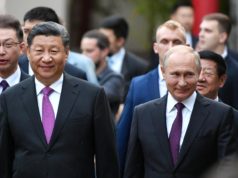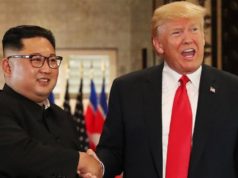Even on the best of days, the complicated nature of domestic politics and foreign policy in Northeast Asia requires policymakers to make well-informed, strategic choices. Long-standing territorial disputes, historical animosities, and strong nationalist sentiment among the populace in each country represent just a few of the many difficulties that must be contended with when deciding policy. When significant change factors are added to the mix like North Korea’s rapid development of nuclear weapons and ballistic missiles, China’s rise, and the leadership vacuum created by a political crisis in South Korea, the dynamics become even more complex and hard to manage.
Leaders in Northeast Asia know that domestic issues can quickly become foreign policy issues and vice-versa. For this reason, they are constantly thinking about policy in two or more dimensions. The status of U.S.-China relations and the rules-based global order is a third dimension that both constricts and provides opportunities for policymaking. The fourth dimension, that is time, is probably among the most significant but often overlooked element that policymakers should consider. The timing and sequencing of events can sometimes be the deciding factor in determining a concrete strategy or policy.
This is highly applicable to the “five-way chess game” currently being played between China, the United States, Japan, and North and South Korea in Northeast Asia. The game, as in the past, is being played simultaneously in four different dimensions. But, it may be the timing that really matters in 2017.
North Korea is intent on building a working intercontinental ballistic missile (ICBM) before the end of this year. That is according to Thae Yong-ho, the highest diplomatic-level defector from North Korea in 20 years. They are working very hard to develop a nuclear-tipped ICBM that can reach the U.S. mainland and their technological progress indicates they could do this before the next mid-term election in the United States. The test of a new solid-fueled, mobile-launched ballistic missile on February 12, four extended range SCUD missiles on March 6, and a new rocket engine for an ICBM or satellite launch on March 18, means that North Korea is getting closer to achieving this goal. Even the failed missile test on March 22 represents North Korea’s determination to develop diversified missile technology.
The developments are not just dangerous because North Korea could aim an ICBM at the United States, but also since the technology could be used strategically to try to coerce this country into withdrawing military forces from the Korean peninsula. In other words, threatening the use of nuclear-tipped missiles against Seoul and Los Angeles simultaneously could force Washington to make choices that could weaken the U.S.-ROK alliance.
Knowing that the United States would be reluctant to respond with force for fear of rapid escalation, North Korea could also increase the amount of “grey zone” provocations that it carries out on and around the Korean peninsula. The grey zone provocations might include events like cyberattacks that cripple critical infrastructure or missile launches that fall short of Japanese territory where U.S. troops are stationed. U.S. failure to respond to these grey zone provocations over time could erode confidence in the alliance system and the American deterrent in Asia. Finally, North Korea could sell this technology to willing states or non-state groups that are intent on doing the United States and allies harm. The U.S. response to proliferation would again be a litmus test for American power and could erode certainty in the alliance system and the global Non-proliferation Treaty (NPT) regime.
With a new U.S. administration that lacks a concrete declaratory policy on North Korea and a government in Seoul that is dealing with a political vacuum after the removal of former president Park Geun-hye, the alliance is essentially on basic autopilot. By the time Washington and Seoul get on the same policy footing with regard to North Korea, some policy options could already be foreclosed due to timing. North Korea’s pursuit of its own timeline for nuclear weapons and missile testing could also constrain the options available to policymakers. A new government in South Korea may not be ready to reveal new policies until months after the May 9th presidential election. And without some agreement between Seoul and Washington on policy it would be a disaster for the Trump administration to bulldoze ahead with unilateral actions. If the chess pieces do not line up by mid-June to August when North Korea is traditionally more receptive to dialogue and engagement (this is the window between U.S.-Republic of Korea Key Resolve/Foal Eagle military exercises and before the Ulchi-Freedom Guardian maneuvers), an option for negotiations in 2017 might already be foreclosed. That is assuming North Korea is even willing to return to multilateral discussions on denuclearization.
The timing on U.S.-China relations could also be a major factor affecting policy outcomes. Trump and Xi Jinping are planning to hold a summit next month but with many mid-level appointments left unfilled at the U.S. State Department and Department of Defense, it is difficult to see how major progress on substantive policy issues will be made at the meeting. If transactions and trade become the key rubric of U.S.-China relations then North Korea policy, by default, may be hijacked by Trump and Xi Jinping’s own domestic clocks.
The deployment of the Terminal High Altitude Area Defense (THAAD) system in South Korea could be another variable that is largely affected by timing and sequencing. The U.S. has already deployed part of the THAAD battery to the Korean peninsula and the process will likely be completed before the ROK election. However, some presidential candidates have sought to politicize this issue because of their political beliefs and because of the severe economic blowback from China. The compressed timeline (60 days) for the election “silly season” in Seoul has forced candidates from both progressive and conservative parties to distinguish themselves from the crowded field of candidates.
In the current environment, one of the issues that has been the easiest to use as a political tool is THAAD. It draws on the South Korean fear of losing China as a major economic partner, and it engenders latent “entrapment” fears that residually exist in the U.S.-ROK alliance relationship. If a new government in Seoul decides to walk back the THAAD agreement and if the Trump administration decides to reopen the KORUS Free Trade Agreement then major tensions could simultaneously erupt in the alliance relationship. This would make coordinated management of North Korea policy and other aspects of U.S.-ROK relations very difficult in the early stages of the two administrations. If THAAD is deployed early and becomes a non-issue after the ROK presidential election then a potential source of friction in the alliance will have dissipated.
Lastly on Japan, the concerns primarily revolve around trilateral security cooperation between Washington, Seoul, and Tokyo and the deteriorating relationship between the Japanese and Koreans. The security dynamics will largely depend on North Korean behavior and the outcome of the ROK presidential election. If a progressive government takes over power in Seoul there will likely be pressure to reengage in dialogue with Pyongyang, and at the minimum some effort to start resending humanitarian aid packages to North Korea. If Pyongyang continues its steady march toward an ICBM, the government in Tokyo will face public pressure to adopt a hardline stance to protect its citizens. This could give further support to far-right groups in Japan that favor the development of Japanese Self-Defense Forces and even fringe groups that support nuclear weapons in Japan. In an already tense relationship, this could drive Seoul and Tokyo even farther apart. The breakdown of the ROK-Japan comfort woman agreement would probably only add fuel to the fire. Carefully managing the relationship in the midst of increasing North Korean provocations will be an important measure to prevent further breakdown in the later months of 2017. Facilitation of U.S.-ROK-Japan trilateral meetings at the working level will play a large role in that aspect.
Given the importance of timing and sequencing in the “five-way chess game,” it would be wise for officials to use opportunities like the ASEAN regional forum (April 26-27), and the G-20 meeting (July 7-8) to maintain policy coordination and keep the lines of communication open. Policymakers should also bear in mind that this fourth dimension (time) can present significant opportunities but also foreclose options in the formulation of bilateral and multilateral policies.
Lisa Collins is a fellow with the Korea Chair at the Center for Strategic and International Studies (CSIS). Prior to joining CSIS, she worked for seven years as a program officer at the Asan Institute for Policy Studies in Seoul, Korea. Her research interests include U.S.-ROK relations, nuclear nonproliferation and disarmament, human rights and refugee law, transitional justice, Northeast Asian security, and the intersection between international law and international relations.






